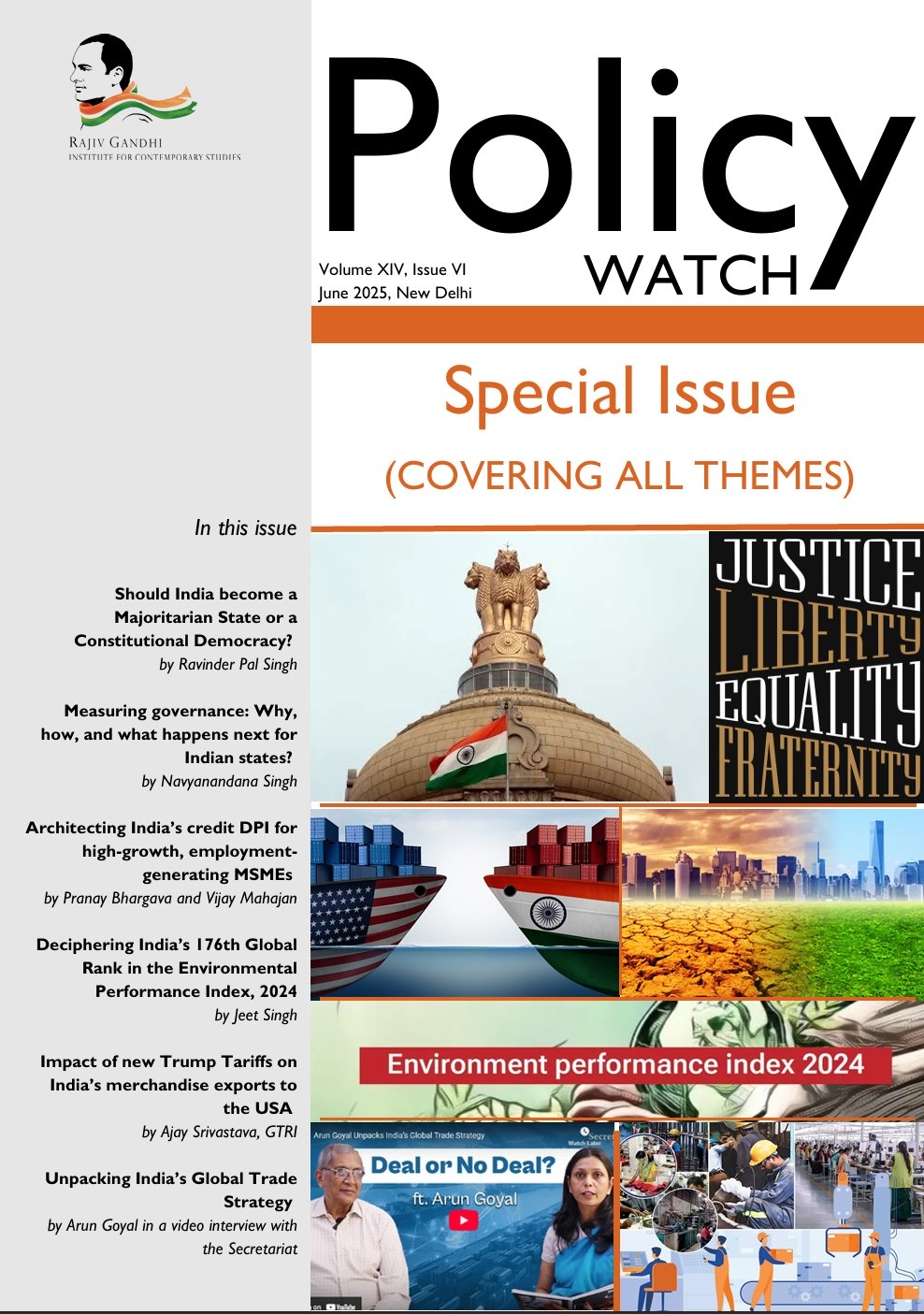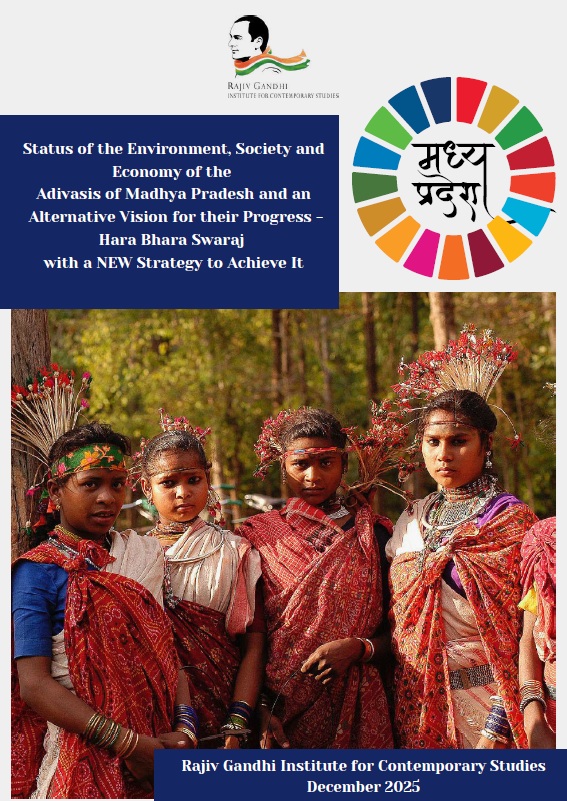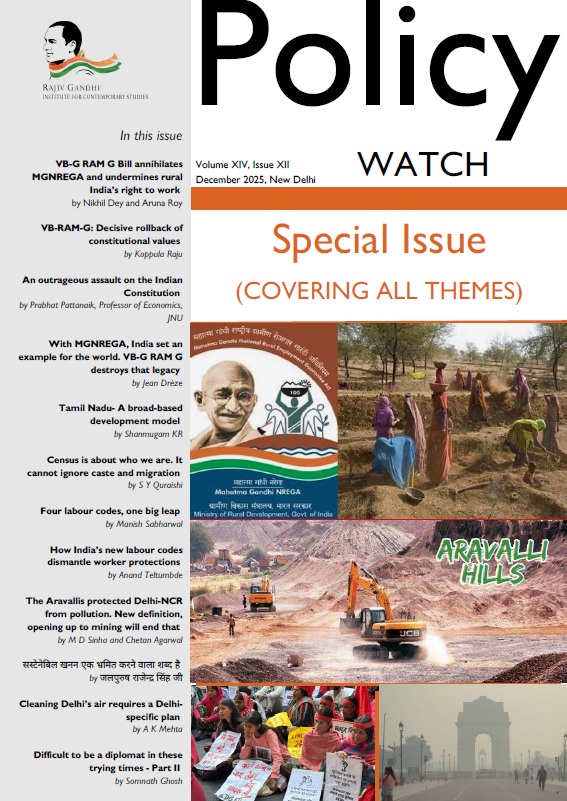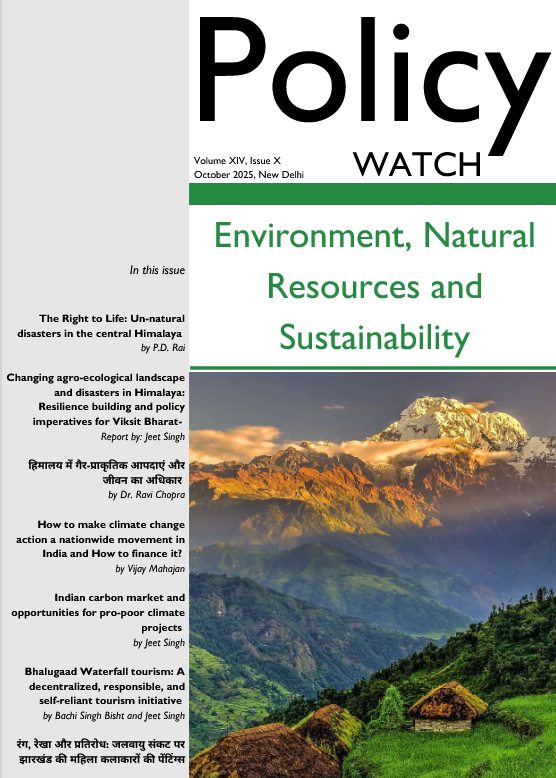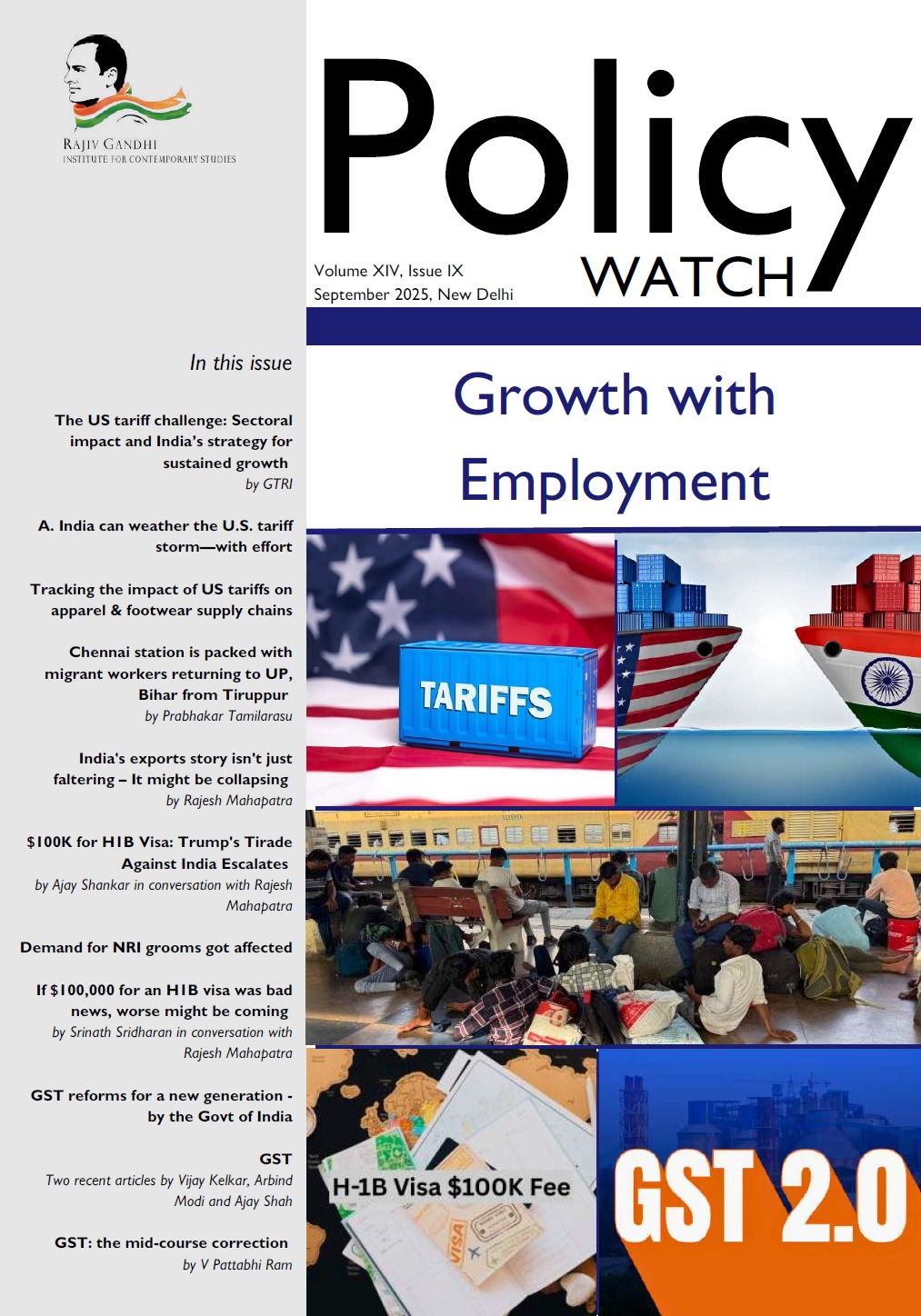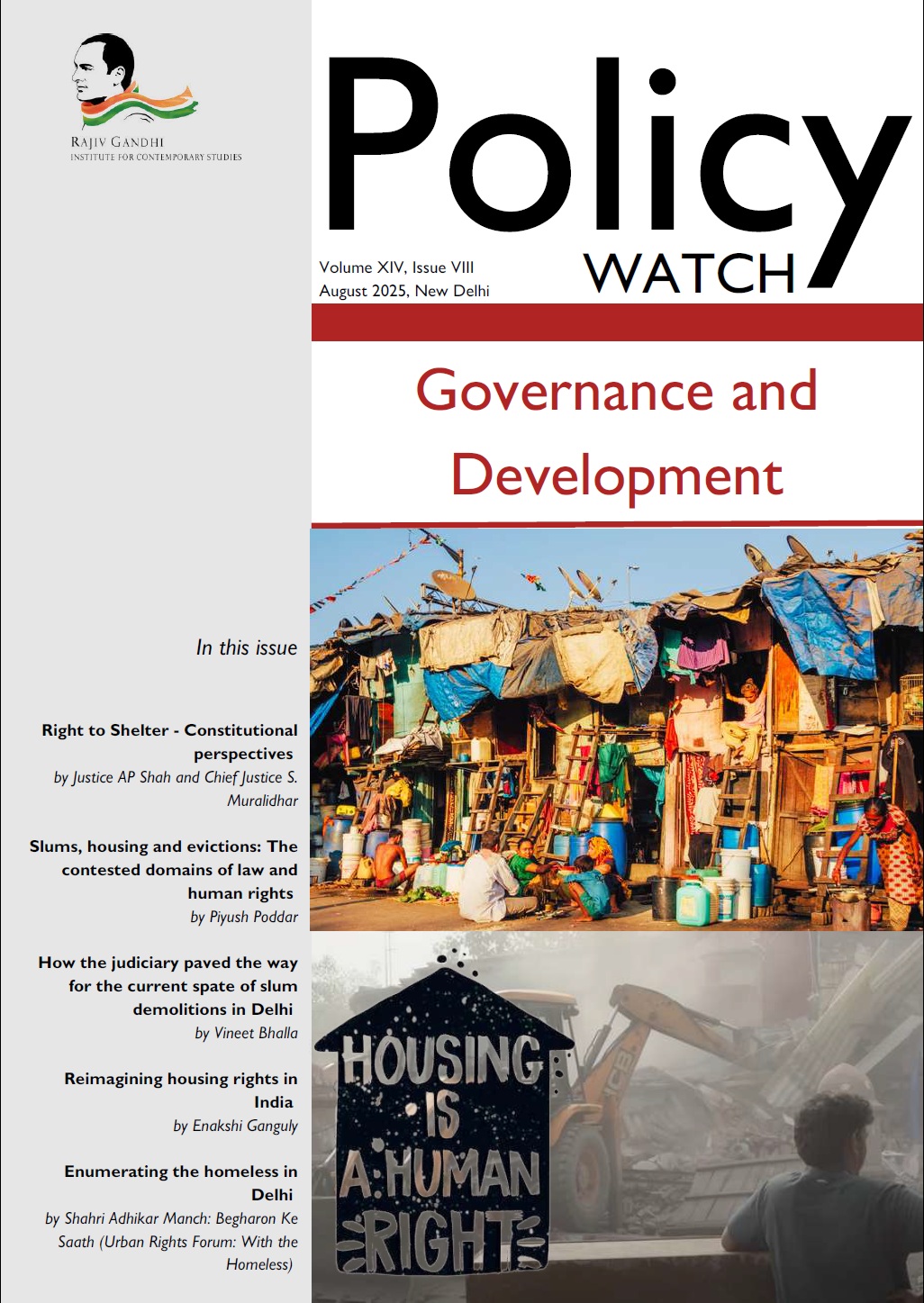The first article is on the theme Constitutional Values and Democratic Institutions. It is by Ravinder Pal Singh, who is an International Researcher on Security and Peace. He was at the Stockholm International Peace Research Institute (SIPRI), and various other international appointments, during which he observed closely the deleterious effect on national security when internal divisions (based on religion, ethnicity, region, etc.) are exacerbated for political gains. His article examines the fundamental question of whether India should operate as a Majoritarian State or a Constitutional Democracy. It highlights that India’s historical lack of a unified national identity or public accountability led to the formation of a constitution based on justice, liberty, and equality for its diverse population.
The author contrasts this inclusive constitutional framework with majoritarianism, which prioritises the interests of a demographic majority, potentially leading to the erosion of human rights, civic freedoms, and societal instability. The article asserts that upholding constitutional principles such as the sovereignty of citizens, separation of powers, and the rule of law is crucial for India’s democratic stability, suggesting that education plays a vital role in reinforcing these values. Ravi Singh has continued his work in this field and has build a large network of like-minded individuals and is now working on an initiative to deepen public understanding of Constitutional Values.
The second article is on the theme Growth with Employment. It is titled “Architecting India’s Credit DPI for High-Growth, Employment-Generating MSMEs”. Written by Pranay Bhargava and the under-signed, it is a sequel of the article in the Policy Watch issue of March 2025, which was titled “SME Financing – How to Bridge the Persistent Demand Supply Gap?” This follow-up article goes into the detail of how to build the digital public infrastructure (DPI) for credit in a way that it can offer flexible terms, with repayment based on cash-flows to MSMEs, and greatly ease the credit availability for this segment, which is the major source of employment in the economy.
We argue for the use of the newer additions to the existing DPI – based on Aadhar and the UPI. These additions include the Unified Lending Interface (ULI), the Open Credit Enablement Network (OCEN), the Account Aggregation framework and the GST Network. We argue that these together offer a wealth of data which can reduce the perceived risk that lenders have in giving small and flexible loans to MSMEs, and ease credit availability.
The third article is on the theme Governance and Development by Navyanandana Singh, a graduate student interning with the RGICS is titled “Measuring Governance: Why, How, and What Happens Next for Indian States?” In it she discusses various attempts at building a governance performance index, starting with the seminal work by Sudipto Mundle and colleagues at the NIPFP.
The Mundle framework assessed governance on five main dimensions: Infrastructure Services (Roads, Power, and Water); Social Services (Education and Health); Fiscal Performance (Tax Collection and Spending Efficiency); Justice, Law, and Order (Court Efficiency and Police Strength) and Legislative Quality (Assembly Productivity). It then looks at other similar indices such as the World Bank’s Worldwide Governance Indicators.
It then describes the latest such attempt, by CareEdge. This has seven pillars: economic, fiscal, infrastructure, financial development, social, governance, and the environment. We think “governance” is narrowly defined in the CareEdge state rankings and the composite index of the seven pillars is a better indicator of overall governance in a state. It is notable that Maharashtra, Gujarat and Karnataka are the top ranked and as expected, Bihar, Madhya Pradesh and Uttar Pradesh. Along with some northeastern states are the lowest ranked.
The fourth article on the theme Environment, Natural Resources and Sustainability is by RGICS Head of Research, Jeet Singh, and is titled – “Deciphering India’s 176th Global Rank in the Environmental Performance Index, 2024”. In it, Jeet Singh delves deeper into why India has ranked so poorly and why the ranking has consistently declined from 155th in 2014 to 176th in 2024. The Environmental Performance Index itself is diagrammatically explained on p 31, with its three main pillars – eco-system vitality, environmental health, and climate change.
Eco-system Vitality is further divided into Biodiversity & Habitat, Forests, Fisheries. Air Pollution, Agriculture, and Water Resources. India is in the bottom five in this. Environmental Health is further divided into Air Quality, Sanitation & Drinking Water, Heavy Metals and Waste Management. Again, India is in the bottom five in this. Climate Change is further divided into Adjusted emissions growth rate for CO2 methane, F-gases, nitrous oxide, black carbon, Net carbon fluxes due to land cover change, GHG growth rate adjusted by emissions intensity, and by per capita emissions; Projected emissions and projected cumulative emissions to 2050 relative to carbon budget. India is in the bottom quartile here.
As a key player in international climate change negotiations, India has a great responsibility to lead the way toward a more just and sustainable world order. India aspires to become a five-trillion-dollar economy while also reducing emissions and meeting its net zero target. However, the country’s consistently falling EPI ranking does not align with its ecological and economic aspirations. He has argued that ecological and economic sustainability go hand in hand. In fact, the regeneration of natural wealth has huge potential to create jobs and significantly contribute to the nation’s economy. The undersigned, in a 2024 paper titled “Hara-Bhara Swaraj” argues that India needs about Rs. 38.1 lakh crore over five years for nature regeneration. Once regeneration work is completed, enhanced productivity will lead to ongoing employment for 5.54 crore people per year on a steady basis from the sixth year onward. Thus, we argue that acting to improve the environment is good for both the ecology and the economy.
The final article is on the theme India’s Place in the World by Ajay Srivastava, Director of the Global trade research Initiative. It is titled “Impact of New Trump Tariffs on India’s Merchandise Exports to the USA”. In 2024, India exported US$ 89.81 billion worth of goods to the USA, but these exports could decline by approximately US$ 5.76 billion—a drop of 6.4%—as a result of the new trade measures. Exports of fish and crustaceans may fall by 20.2%, iron or steel articles by 18.0%, and diamonds, gold, and related products by 15.3%. Vehicle and parts exports are projected to drop by 12.1%, while electrical, telecom, and electronic products may decline by 12.0%.
Other categories such as carpets, plastics and articles thereof, petroleum products, organic chemicals and machinery are also expected to be negatively impacted. However, India could see modest export gains in sectors where the U.S. has raised tariffs on competing countries. These include textiles, apparel, ceramic products, inorganic chemicals and pharmaceuticals. While the overall effect of the new tariffs’ points toward a decline in trade, India’s competitive position in select product segments may help cushion some of the losses.
As Ajay Srivastava’s article was first published soon after the Trump tariff announcement, and things have progressed since then, we also carry a link to a recent interview with another well-established trade expert, Arun Goyal of the Academy of Business Studies. Goyal takes a more favourable view of the developments particularly given the livelihood of the Free Trade Agreement being signed between India and the USA.
Policy Watch: Special Issue - June 2025
Send download link to:

